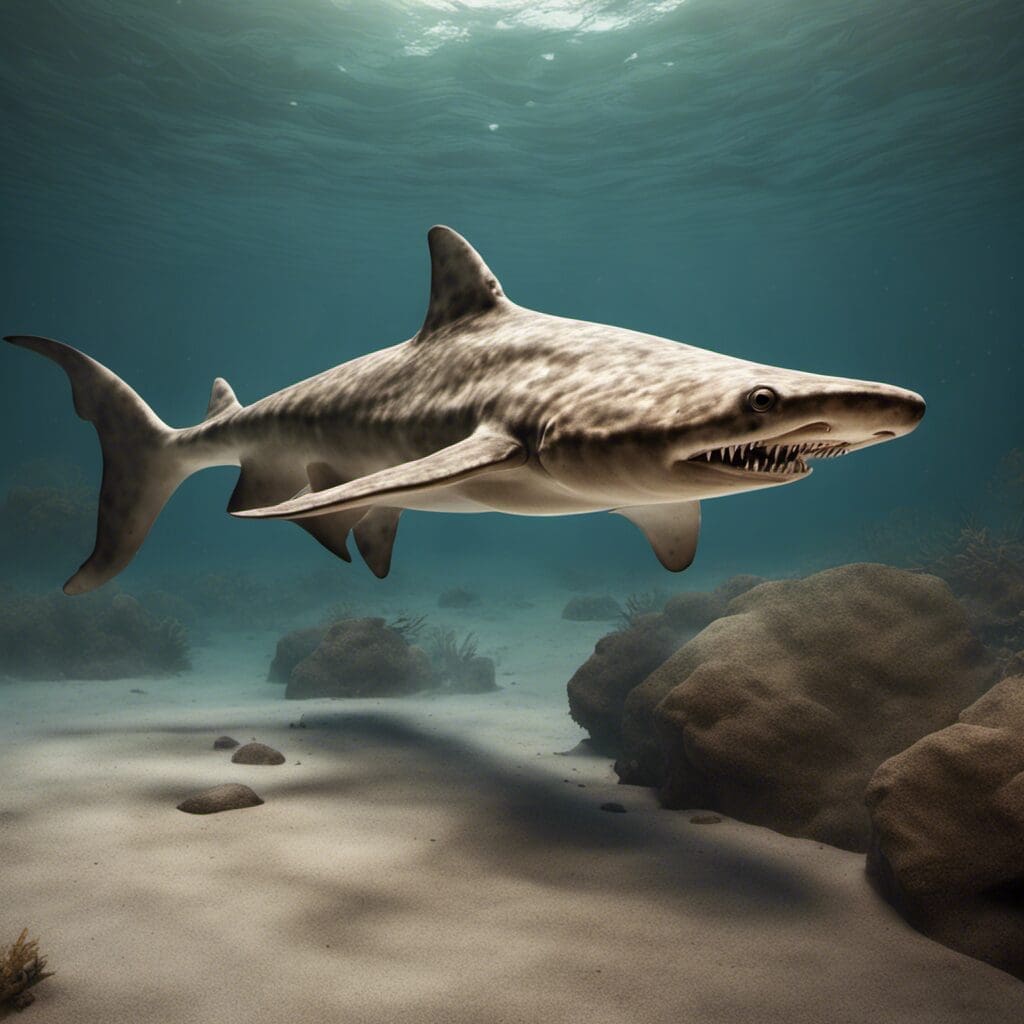Introduction
The Swell Shark (Cephaloscyllium ventriosum) is a fascinating species of catshark, a family known as Scyliorhinidae.
Conservation Status
The International Union for Conservation of Nature (IUCN) has listed the Swell Shark as a species of “Least Concern”. Despite this, the species is still threatened by commercial fishing practices, with conservation efforts focussed on establishing protected marine habitats to provide refuges from human disturbance.
Statistics
| Attributes | Average | Range |
|---|---|---|
| Length | 100 cm | 80-110 cm |
| Weight | N/A | N/A |
| Average lifespan | 25 years | N/A |
Distribution
The Swell Shark can be found in the eastern Pacific Ocean, predominantly along the coastlines of North America and South America. These sharks do not exhibit migration patterns.
Habitats
They prefer rocky, kelp-filled waters and are usually found at a depth between 2 to 450 meters. They withstand a varied temperature range, adapting to anything between very cold to warmer coastal waters.
When and Where to See
Swell Sharks come out at night to hunt and during the day they hide in caves or crevices. Unlike other shark species, they exhibit no seasonal patterns.
Best Fishing Locations
Top places to find Swell Sharks include:
– Santa Catalina Island, California
– Baja California, Mexico
- Chilean coastline
If you’re after Swell Sharks, look in crevices, over rocky reefs, and under kelp beds, particularly at night when they are most active.
How to Catch
Preferred Bait and Lures
Small fish are the best baits to catch Swell Sharks.
Fishing Techniques
They can typically be caught using bottom fishing techniques.
Best Time
Night time is the best time for fishing Swell Sharks as that’s when they’re most active.
Identification Guide
Swell Sharks have a unique spotting pattern of dark blotches across their brownish to yellow brown body. They have a cylindrical shape and small, blunt heads. When threatened, they puff up their bodies, almost doubling in size.
Culinary (if applicable)
These sharks are not typically used for culinary purposes.
Additional Information
Behaviour
Swell Sharks feed primarily on bony fish, octopuses, and crustaceans. When danger approaches, they inflate their bodies – mimicking a balloon – to deter predators.
Predators and Threats
The primary predators of Swell Sharks are larger fish and marine mammals. However, their greatest threat comes from human activities, mainly commercial fishing.
Cultural/ Historical Significance
Swell sharks get their name from their ability to swell their bodies with water when threatened. This habit has both intrigued and feared people, becoming the subject of local legends and stories.
References and Further Reading
Interested in learning more about Swell Sharks? Get into “Sharks of the World by Leonard Compagno”, certainly a go-to book for shark enthusiasts and scientists alike. Also, “Sharks, Skates, and Rays: The Science of Elasmobranchs and Their Relatives” by William C. Hamlett provides a more detailed scientific understanding of these creatures. Remember to follow responsible practices while interacting with these wonderful creatures in their natural habitat

